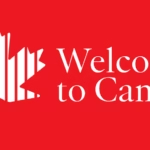Canada plans to simplify permanent residency pathways for certain immigrant categories
A migration reform plan aims to streamline the transition from temporary status to permanent residency for skilled workers and international graduates.
This plan is expected to be unveiled by Prime Minister Mark Carney on November 4.
According to public information, Prime Minister Mark Carney is expected to announce the National Talent and Immigration Framework on November 4, 2025.
The framework will unify existing programs and align permanent residency objectives with the country’s economic needs.
The future National Talent and Immigration Framework aims to “bring together all migration programs” into a coherent structure. It will also set annual permanent residency targets based on sectoral and regional needs.
The stated intention is to simplify pathways that are currently fragmented across multiple channels. These include study permits, post-graduation work permits, the Canadian Experience Class programs, and federal and provincial economic immigration programs.
The goal is to reduce processing times and improve predictability for both applicants and employers
The plan aims to facilitate transitions for individuals already in Canada under temporary status. It also aims to enhance planning for permanent admissions in response to labor shortages and productivity priorities. Targets should be calibrated to respond to economic conditions.
This is important as the proportion of temporary residents has increased significantly in recent years.
The government will update the post-graduation work permit program to better support graduates.
According to communicated indications, the adjustment would focus on supporting the transition to permanent status. It would also better align qualifications obtained in Canada with labor market needs. The objective is to prevent graduates trained in the country from experiencing difficulties converting their experience into permanent residency. This is due to unclear pathways or inadequate recognition of skills.
The reform is presented as a response to two key dynamics: the increasing number of temporary residents and current economic challenges. Temporary residents include foreign workers, students, and other categories.
By bringing temporary pathways closer to permanent establishment, Ottawa aims to reduce administrative uncertainty, retain talent already integrated into the Canadian economy, and better distribute admissions according to sectoral needs. These needs include those at the provincial and territorial levels.
The announced changes are expected to modify the process for submitting permanent residency applications.
Simplification of pathways, harmonization of criteria, and introduction of economic targets could transform candidate strategies. This may affect their choice of studies, initial work experiences, and interprovincial mobility. Employers may also adjust their plans for hiring and retaining foreign talent trained in Canada.
Prime Minister Mark Carney will officially announce the National Talent and Immigration Framework on November 4, 2025.
At this stage, no additional details have been shared about the technical implementation. This includes regulatory texts, transition periods, and detailed program criteria. There are also no updates yet on expected adjustments at the provincial level. Provinces are key partners in economic selection through their own streams, such as Provincial Nominee Programs.
Federal leaders plan to centralize the immigration vision while remaining flexible to meet local needs.
The definition of permanent residency, indexed to economic needs, suggests more refined volume management. There may be regular adjustments based on changing economic conditions and demographics.








